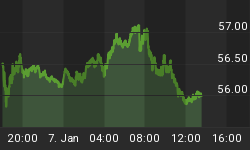Thursday's auction will mark the resumption of issuance of longer-dated treasuries.
It is worth a general comment, particularly as the coupon is expected to be around 4 ½%. Low coupon bonds with long maturities are volatile, which some traders find daunting.
In 1779, Samuel Johnson observed: "Claret is the liquor for boys; port is for men; but he who aspires to be a hero must drink brandy."
These days, heroism is found in martinis and the long bond. Some twenty years ago, there was an article along the lines of "Real Men Trade Long Bonds". We would still go along with this and observe that the ten-year note, like Chardonnay, is for boys.
Most of the fashion in the shorter maturities has been due to Europe, which merits some review. Over the past 100 years, Europe's political and consequent financial instability made it a rare accomplishment to have a liquid money market, let alone a liquid market for long-dated issues. Perhaps when Europe abandons its dreadful and endless experiment in socialism (Moscow on the Maastrich), a big liquid market for long maturities will develop.
This could take a decade or so when eventually trading the shorter maturities will be relegated to those who have just reached the drinking age.
Of course, we all know that the bigger bang from the trading dollar is obtained from the lowest coupon with the longest maturity. In this regard, British Consols with a 3% coupon and perpetual term are ideal. We'll have to do some thinking about a perpetual "zero".
Canada used to have a 3% "Perp", but the "Federales" repudiated their obligations by forced redemption. With a bureaucracy dedicated to lowering interest rates, having a 3% issue outstanding when the long yield was at 19% (1981) was just too embarrassing.
Financial turmoil could soon increase corporate long rates, but after that the next bull market for long governments in the senior currency could take the yield down to 3%. In which case, the Consols or a 4 ½% long treasury would be a macho performer.















